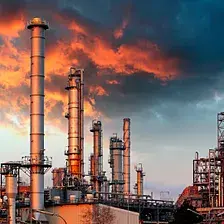cross-posted from: https://slrpnk.net/post/24690127
Solar energy experts in Germany are putting sun-catching cells under the magnifying glass with astounding results, according to multiple reports.
The Fraunhofer Institute for Solar Energy Systems team is perfecting the use of lenses to concentrate sunlight onto solar panels, reducing size and costs while increasing performance, Interesting Engineering and PV Magazine reported.
The “technology has the potential to contribute to the energy transition, facilitating the shift toward more sustainable and renewable energy sources by combining minimal carbon footprint and energy demand with low levelized cost of electricity,” the researchers wrote in a study published by the IEEE Journal of Photovoltaics.
The sun-catcher is called a micro-concentrating photovoltaic, or CPV, cell. The lens makes it different from standard solar panels that convert sunlight to energy with average efficiency rates around 20%, per MarketWatch. Fraunhofer’s improved CPV cell has an astounding 36% rate in ideal conditions and is made with lower-cost parts. It cuts semiconductor materials “by a factor of 1,300 and reduces module areas by 30% compared to current state-of-the-art CPV systems,” per IE.
I am not a scientist so please correct me if I am off base, but did it really take them this long to attempt to focus light onto PV cells using a fresnel lens?
My hobby as a 15 year old was buying broken projectors to harvest the fresnel lenses in the lamp on top. They could focus sunlight so powerfully that you could burn shit. I didn’t do that, surprisingly. I was like Marge Simpson, I just thought they were neat.
Adding to what the others wrote, solar cells become less efficient at power conversion (light -> electricity) as the temp of the solar cell materials (semiconductors) increases. So the issues is how to get more photons to the semiconductor without heating it up.
Would a UV filtering lens help? Do solar cells generate more power from certain parts of the light spectrum?
OK, take that Fresnel lens that you were using to melt pennies and then focus it on a PV cell that is also made of metal. What might be the expected response? The science in this case is making PV cells that can handle the intense heat.
That makes sense. If I understood everyone clearly, it’s not the idea to use a fresnel that’s new here, it’s the fact that we just haven’t yet had anything capable of withstanding those temperatures and still allowing for the piezoelectric effect to happen.
Not being any kind of solar energy expert, my initial thought was how the cell’s would hold up under the increased heat, and what technology (if any) they’d be using to monitor/mitigate. The article does briefly mention the cells achieving ~33% @ ~167° F, and does mention (what seems to be tangential) technologies that allow for cells to be nailed down as if they were shingles.
My guess is that it isn’t that they finally using techniques that seem obvious to us, but that they’ve developed supporting tech to mitigate the detrimental effects of using magnification.
https://ieeexplore.ieee.org/document/10938951
This is 36% MODULE efficiency with expensive cooling. 30% actual year long efficiency without it. Requires dual axis tracking. Seems heavy as its very tall/deep.
Headline of cost reduction is very unlikely. Especially on a per acre/fairly large area basis. Dual axis tracking requires more spacing than fixed orientation rows, and loses benefits under cloudy conditions. While power at 7am and 5pm is more valuable when competing against high penetration solar, batteries are now more competitive than tracking, and can serve edge of day and night power needs. Tracking solar tends not to be built anymore, due to low cost of panels. The cooling infrastructure is also not as useful as it is on rooftops because the heat capture has useful benefits for homes.
It is also unclear how this has advantage over parabolic mirror.
Agri PV is a real use case, where more free land means more land use, even if most of it gets more shade, except around noon.
Solar panels as fences is what is needed.
Kinda works if you use bifacial panels.
Bifacial panels as a fence provides 3% extra yield but 30% extra revenue
https://www.gridcog.com/blog/solar-fence-vs-ground-mount-solar
Sure, but if you wanted solar panels to work on both sides of your East/West facing fence, you’d have to buy 100% more panels, so bifacial saves you 70% there. Seems like a good deal. I’m sure you read the “Model Overview” of that article and caught that the monofacial panels were facing the equator, and the bifacial panels were facing East/West…
Edit: bad read on my part, I didn’t not understad the full content of the previous message.
I don’t think we are arguing. I was just giving you more details.
My interpretation of your comment was that bifacial solar panels are a useless gimmick which allows companies to charge more for a cheaper product.
Is that correct?
No, the opposite. They are superior. Bifacial panels have a 3% additional yield over standard panels. The +10-20% cost premium is covered by the +30% revenue
Even with traditional mountings, Bifacial panels pick up extra light reflected from the ground.
Urban shade
It’s viable as edge of day high power boost in east/west direction, and simply any extra power that is cheap and easy to install, that adds privacy or keeps the controlled beings inside.
You are at least completely and utterly wrong about tracking solar not typically being built anymore. Any major solar site uses tracking if you have a couple acres on a corner maybe not but I think you are being a bit too general. Panels are only one of many costs per solar panel installation, its still cost effective overall to increase efficiency.
You’re right about US. seems half uses tracking. No numbers on China which is 30x larger market. Economics still only make sense at consumer level of $1/watt panel prices, to me, but I guess there are reasons I don’t understand.
Remember gang, stuff like this means 10-15 years before you see it in market.
What was the stuff like this of 15 years ago ?
Honestly solar panels and electric cars. I know those existed over 15 years ago, but they weren’t serious market options until like 5 or so years ago.
More expensive and less efficient.
They need changes in laws too. Instead of chewing up open space and farmland I’d rather see more urban areas used like parking lots and industrial sites.
Yeah, Don’t put the solar farms in meadows, or on mountains. put them on warehouse roofs, over highways, over parking lots, on government buildings, etc etc.
Roughly 50% of germany is used as farmland. On 60% of the farmland crops to feed livestock are grown. On 20% of it crops for energyproduction (biofuel, biogas). If you take for example rapeseeds, used for biodiesel, you would harvest around 50 times as much energy with a pv-plant on the same area. You would need to install pv on 5-6% of the farmland to produce enough electric energy for all of germany for a year. Granted you also can provide the grid for it and enoguh storage.
Not only that, but livestock can still graze under panels, on grass that often grows just as well with a little shade.
“The lens makes it different from standard solar panels that convert sunlight to energy with average efficiency rates around 20%, per MarketWatch. Fraunhofer’s improved CPV cell has an astounding 36% rate in ideal conditions”
Why would I want to compare one panel’s average efficiency to another panels efficiency in ideal conditions?
Hey it’s those guys that invented MP3s.
It really whips the sun’s ass.
Lossy compression of sunlight?
Banned in North America in 3… 2…
Wouldn’t this be negated by the fact, that the same area of roof now has less actual PV cell on it? Since the light gets concentrated on a smaller area?
I think the idea is that it’s the same amount of light is being used but the actual expensive part of the solar cell is cheaper and designed to take the increased heat. So the same size “solar unit” on the roof collecting the same amount of light and generating the same amount of energy but cheaper overall. At least that was my take. Correct me if I’m wrong.
Yeah, a similar amount for less money could be feasible. I guess. Not sure how cheap the sanding of the lens structure is though
US Government - not on my watch…
How does concentrating the sunlight like this not start a fire? Or wouldn’t this at least cause panel electronics to overheat?
I would imagine they’re not concentrating maximally. Just enough to increase efficiency.
Just wanted to drop a comment.
I love solar. It’s the best form of energy that’s attainable by the average person.
I wonder what kind of concentrating optics they use. Simple Fresnel lenses won’t do, unless you closely follow the sunlight to stay in focus.
I feel like this is one of those discoveries thats like, well duh of course it would work that way
at this point it doesnt matter. theres no saving us from extinction due to climate change. this serves only for the intermediate period where we can “save” some money on energy day to day, before the inevitable collapse that makes money and savings worthless.
dont get me wrong, if i could afford a house, let alone additional panels and the additional fees that come with installation, maintenance, regulations, licensing, etc. then id be all in, even if it was just to contribute to the dying ideal that there was some semblence of hope for a better future. this is up to the landlords and the upperclass to give a shit about, and most of it is for grandstanding and keeping up with the joneses.
i used to install these for a living during covid. only people in my area who could afford them were multigenerational farmers and eco concious suburbanites. even for the suburbanites living in million+ dollar homes it was a stretch financially, and a hastle due to regulations.
good idea. but a bit late. we are at the point that if someone waved a magic wand tomorrow, and everyone stopped driving cars and pulled a full 180 on coal, oil, and gas, it would still be far too late.
if you can afford the inevitable markup that comes with proffessional installation. be my guest. if you are a poor person wanting to slap some panels on a tiny home, go nuts. just dont expect to save the world by doing so. its fucked. live how you want to while you can. drink, fuck, fight, eat good food, play video games, bed rot and consume to your hearts content.
nothing can save us. not even the “indomitable will of the human spirit” not a god damned thing.
sorry to shit in your salad. but thems the breaks.

(I had edited before but thought I edited the wrong comment so I deleted it)
Edit: to clarify, I have no doubts there are advancements. Now let’s implement them. Oh we won’t? Not surprising.
That is what I meant, I want all the renewables and more. I used to be optimistic about these articles. Now I just exhale.
I realize this was not a fitting gif in hindsight.







